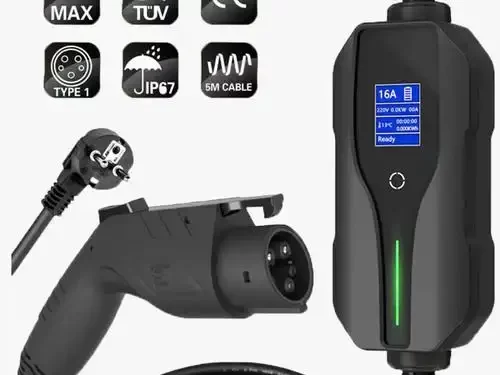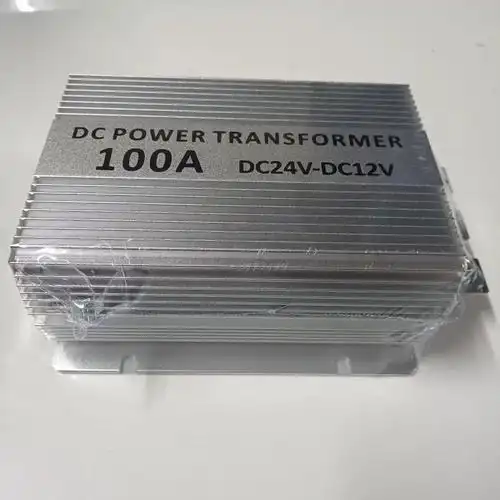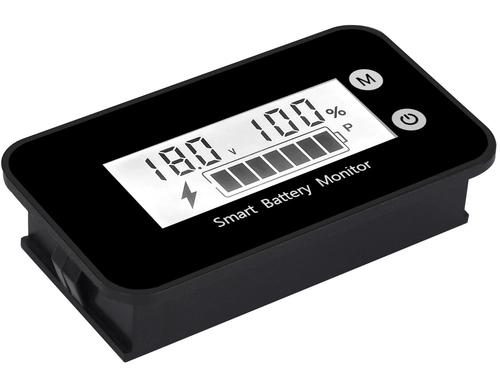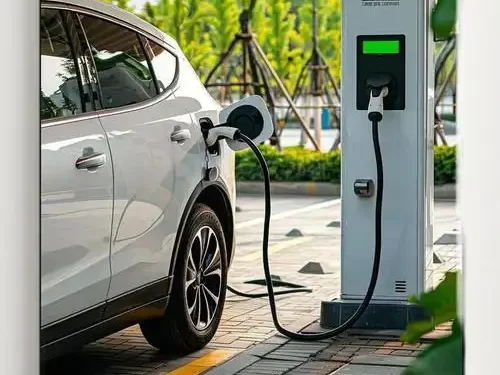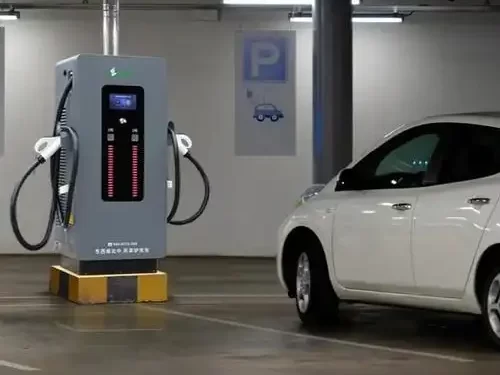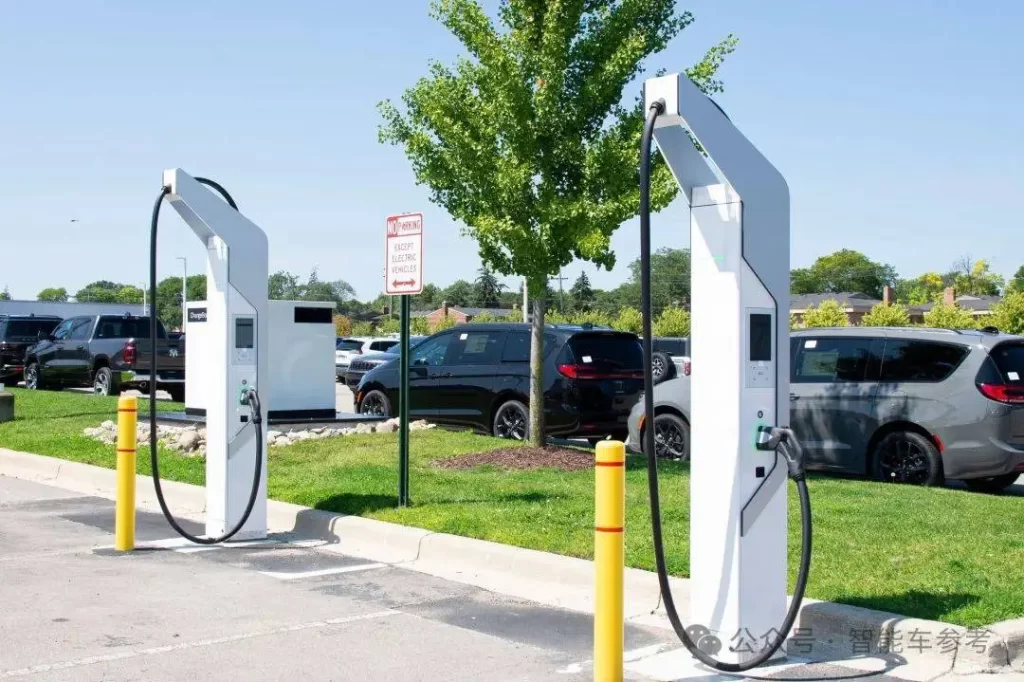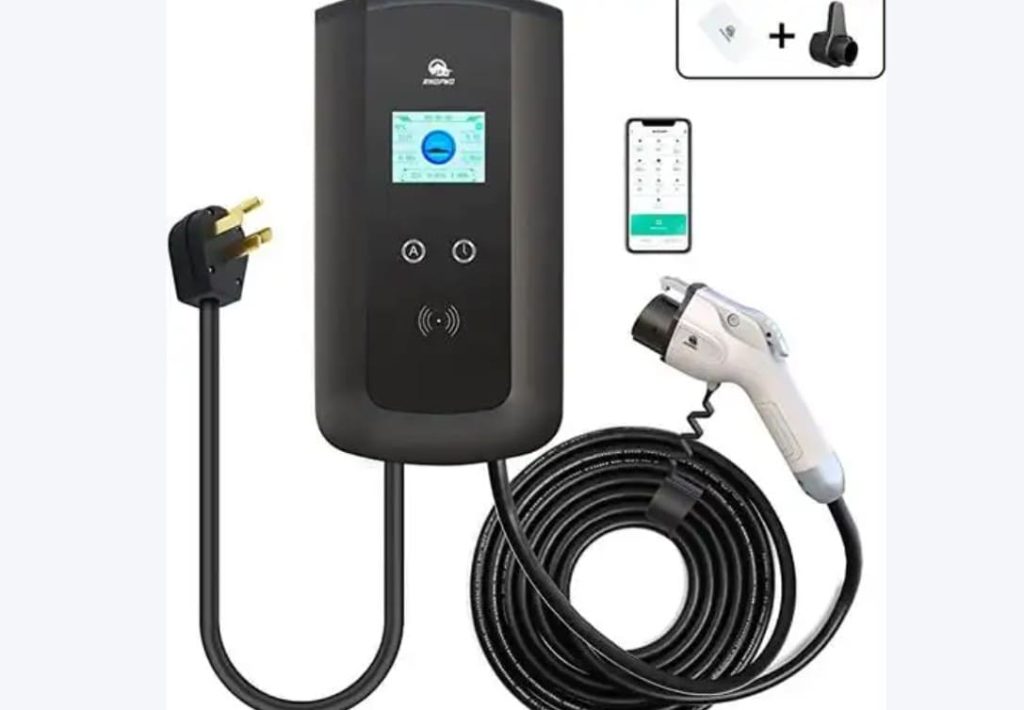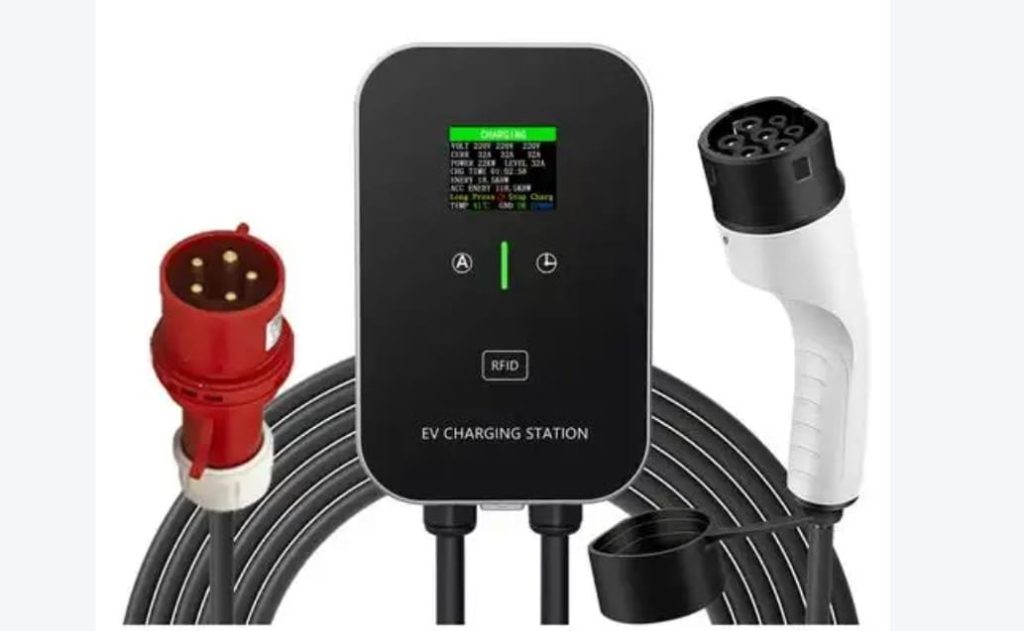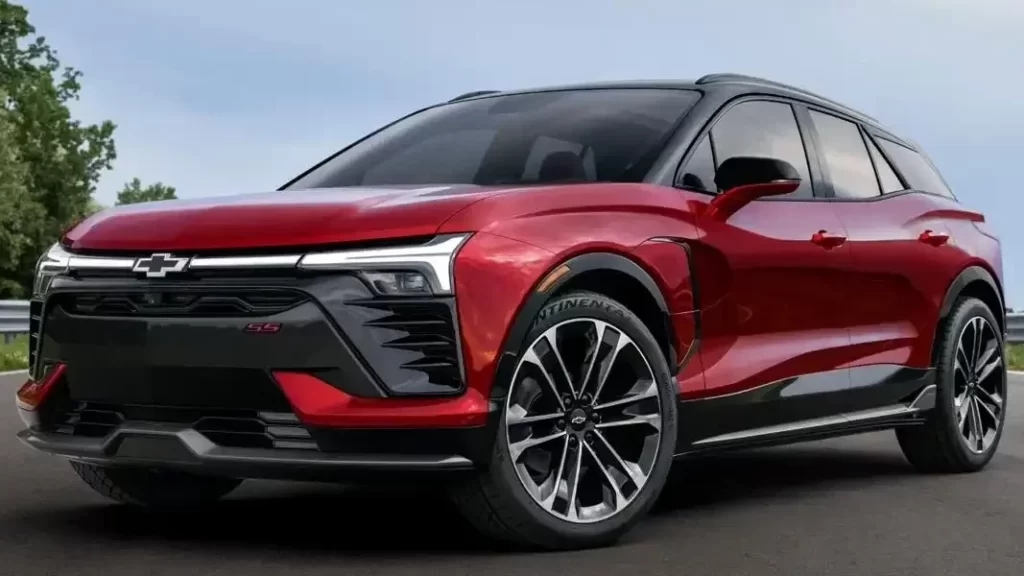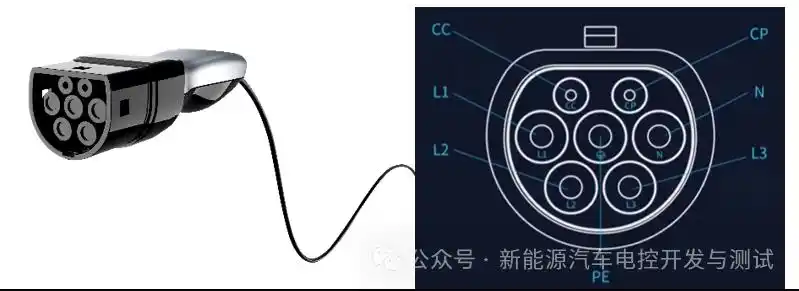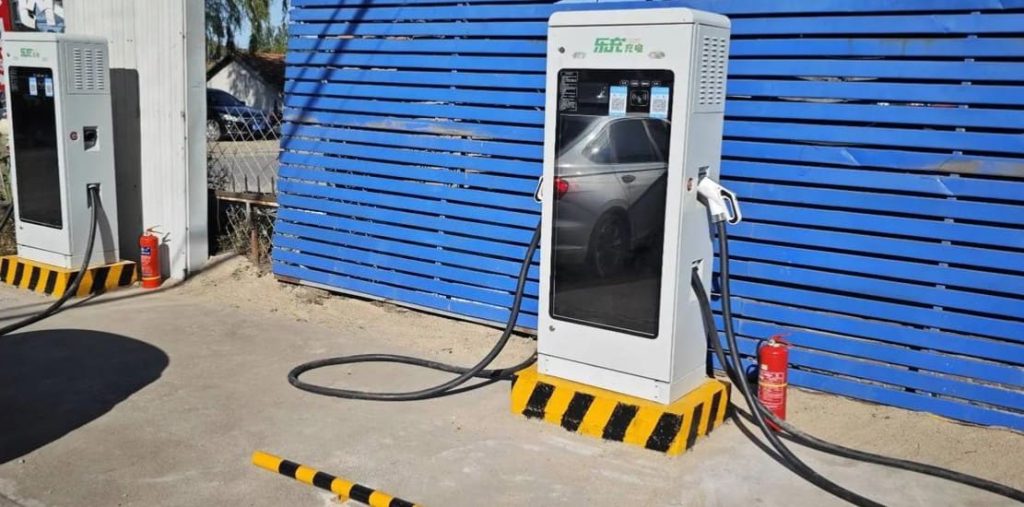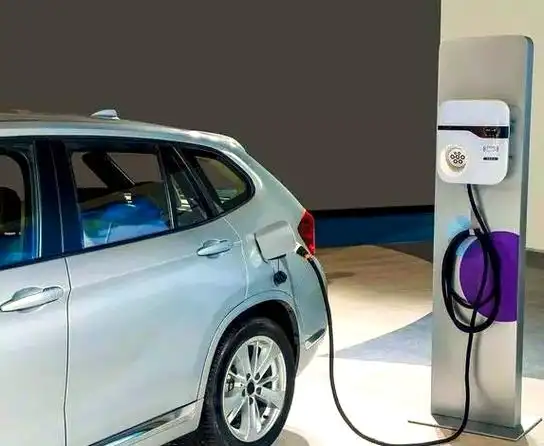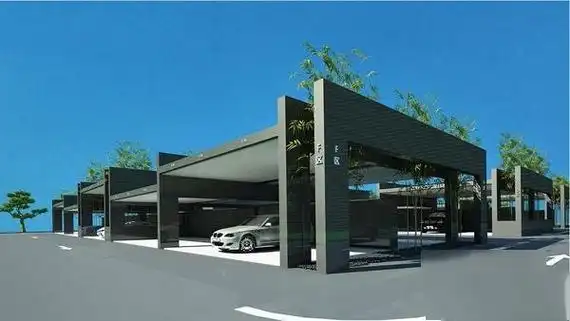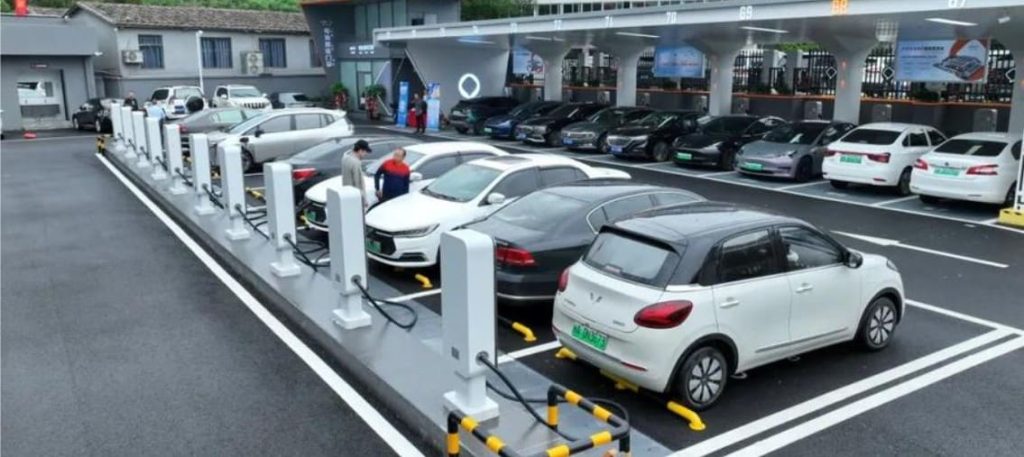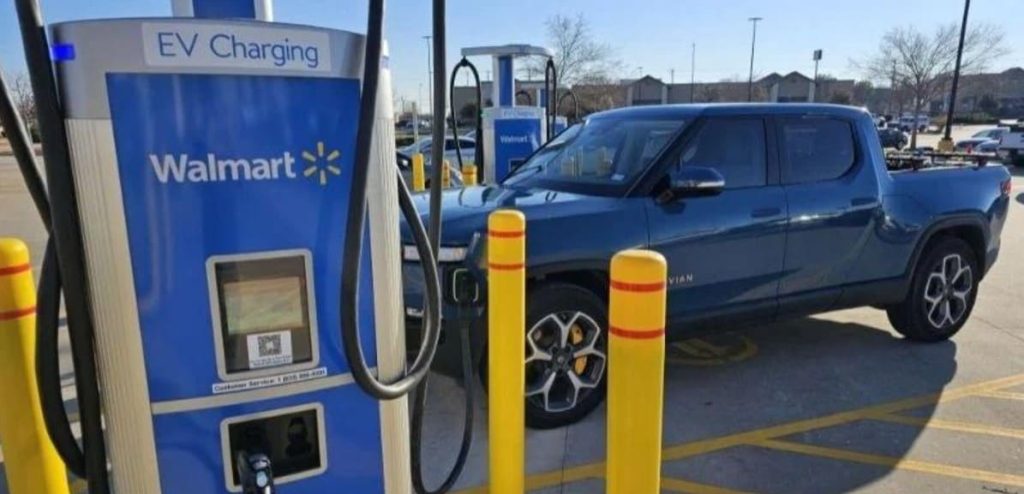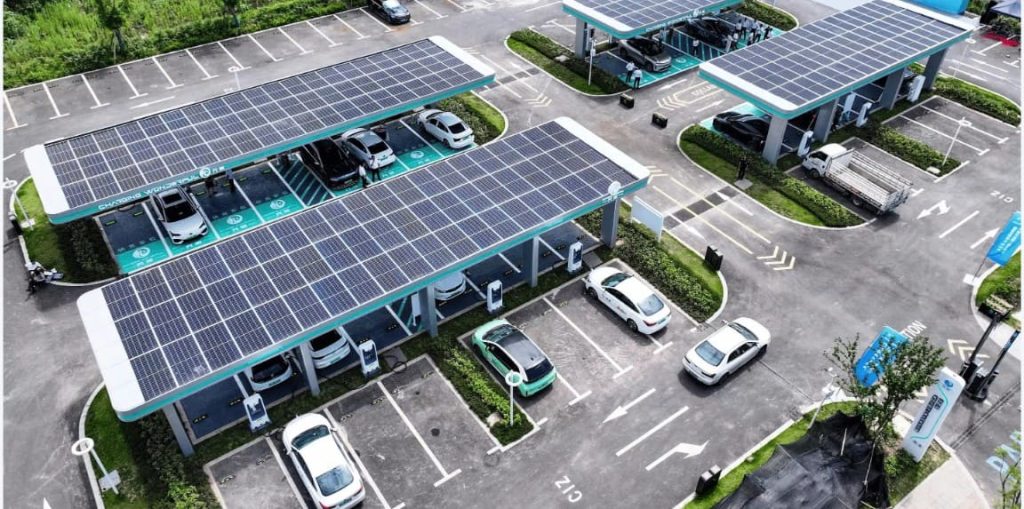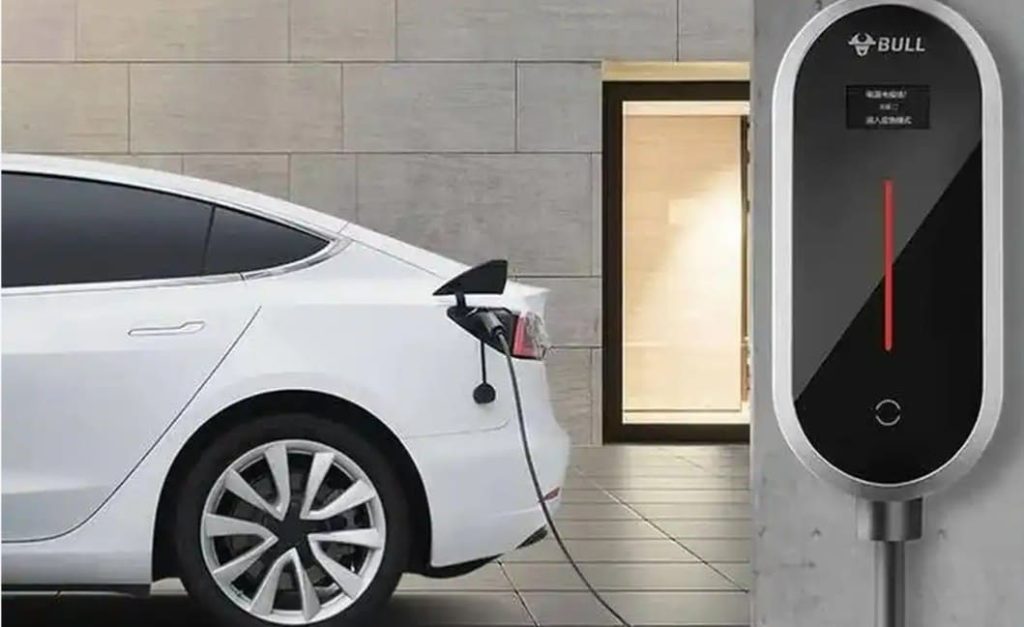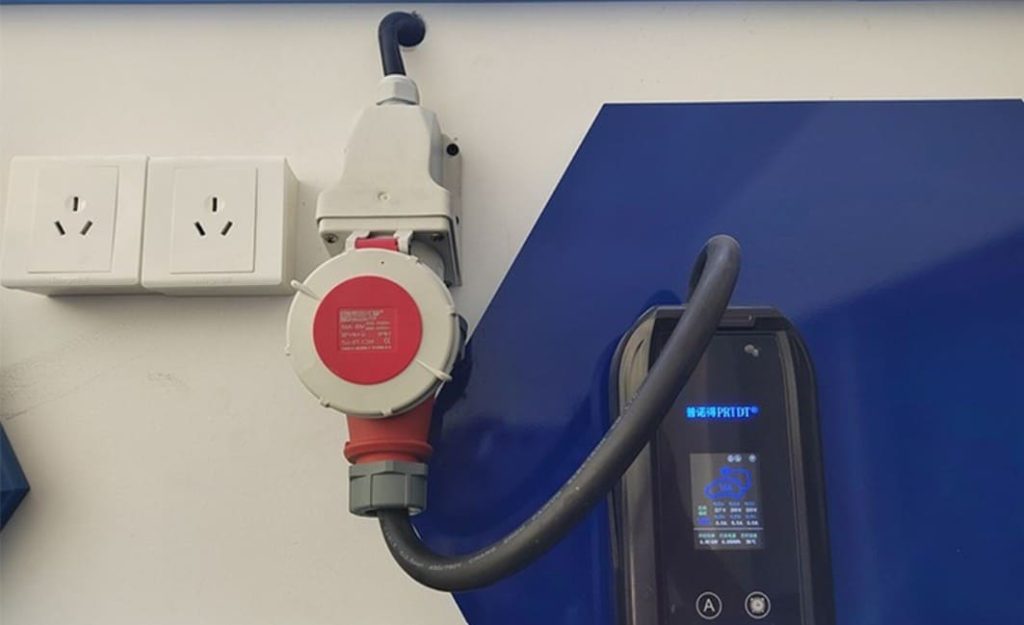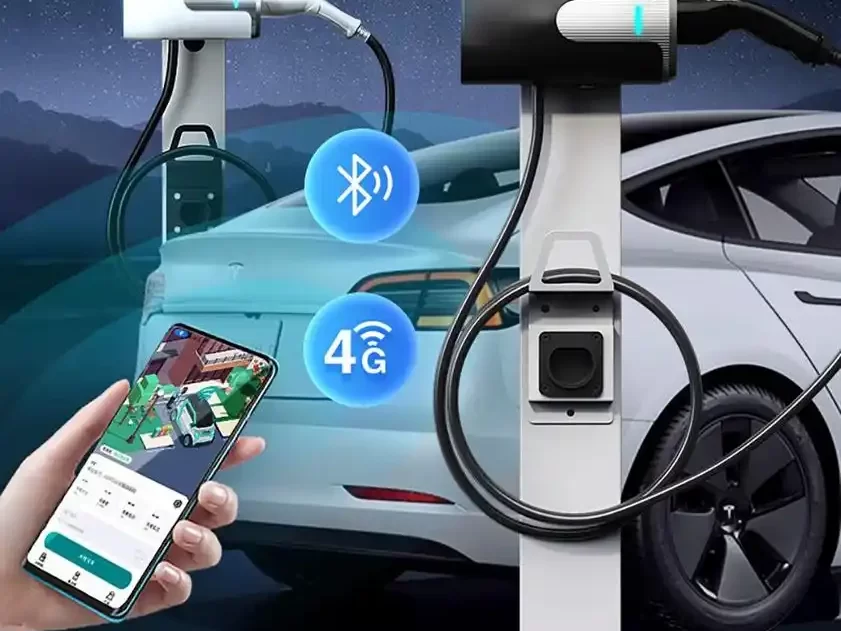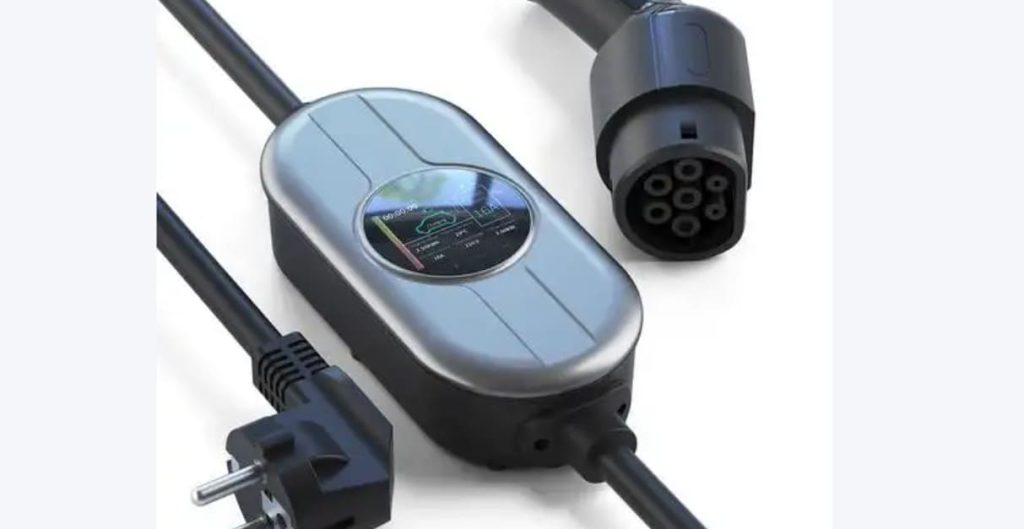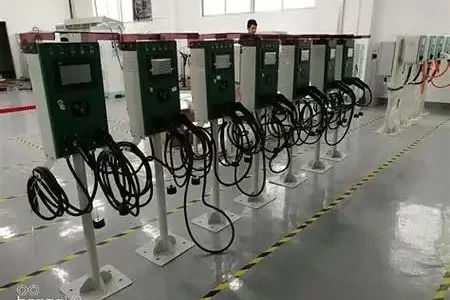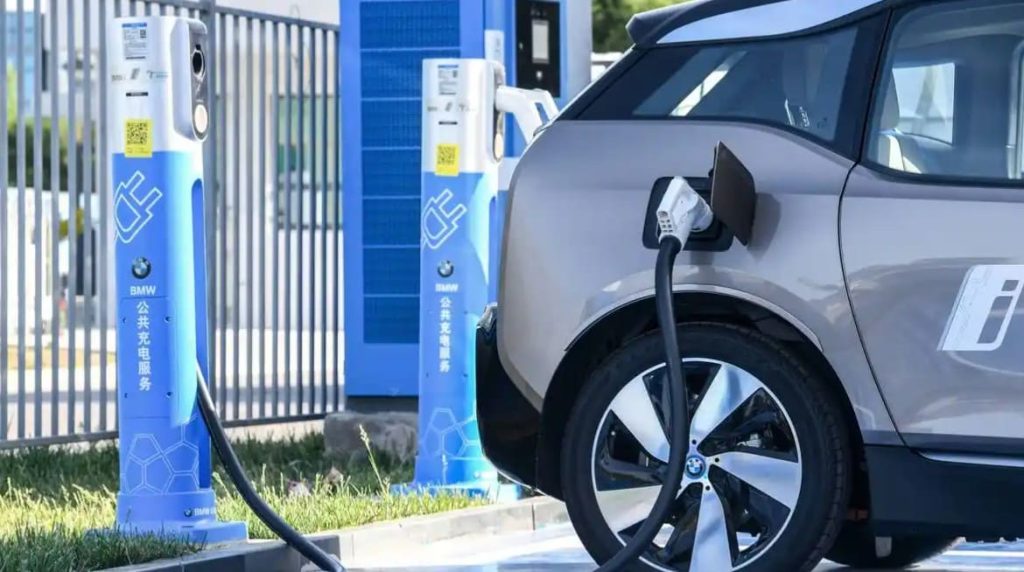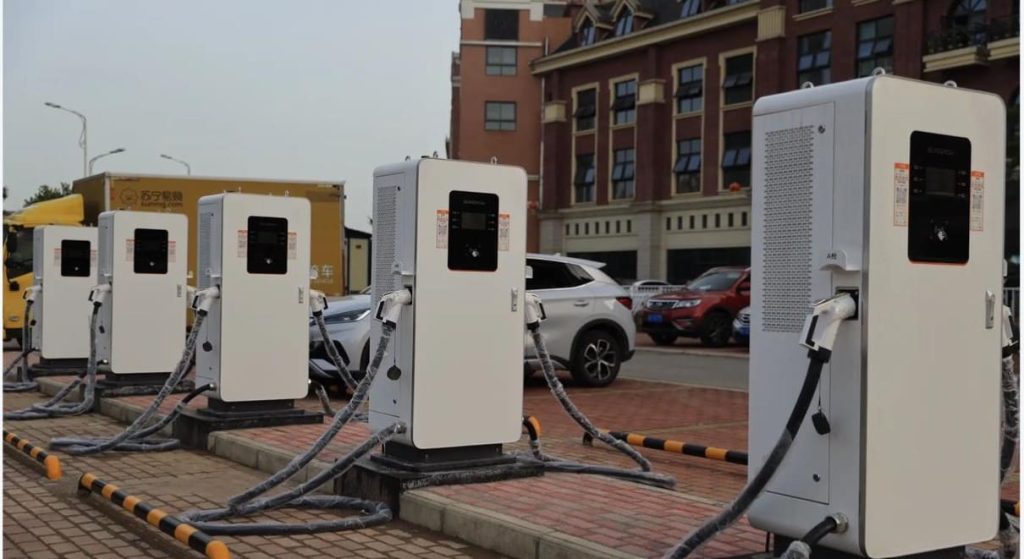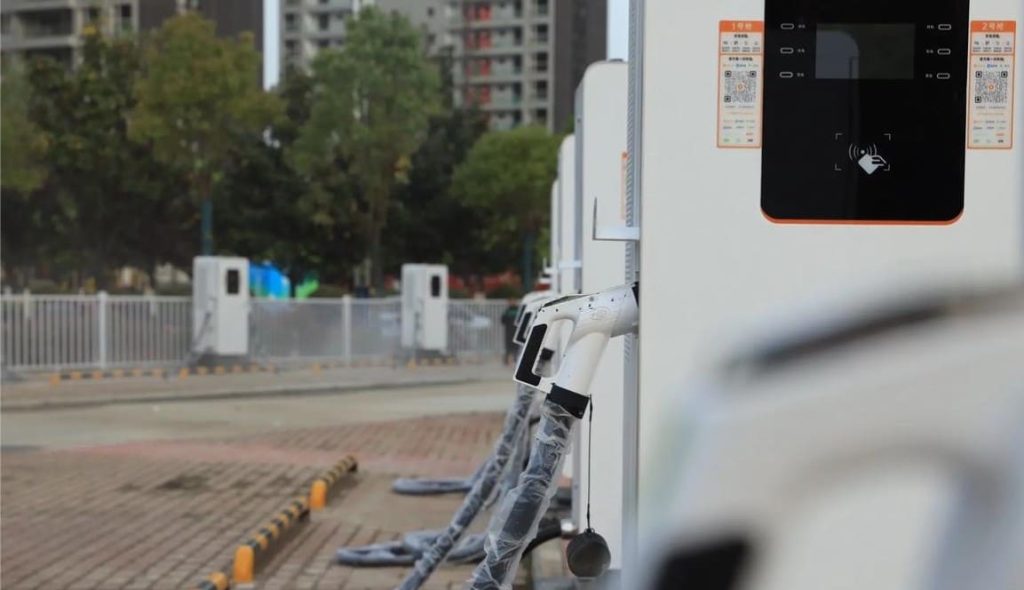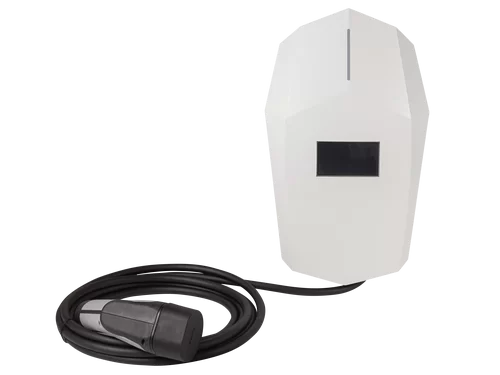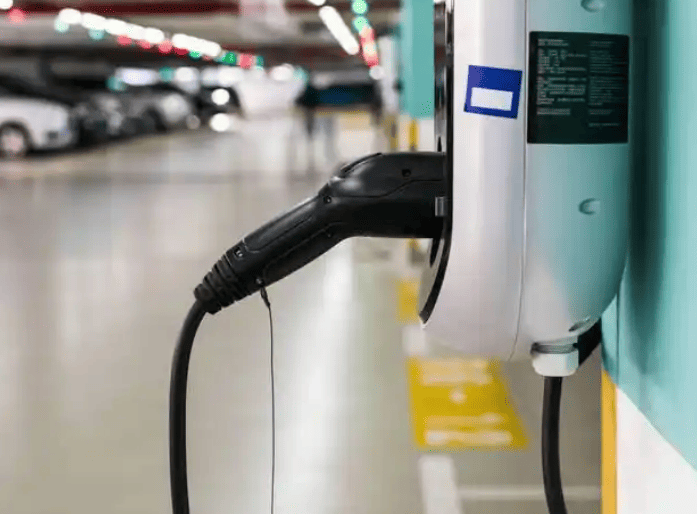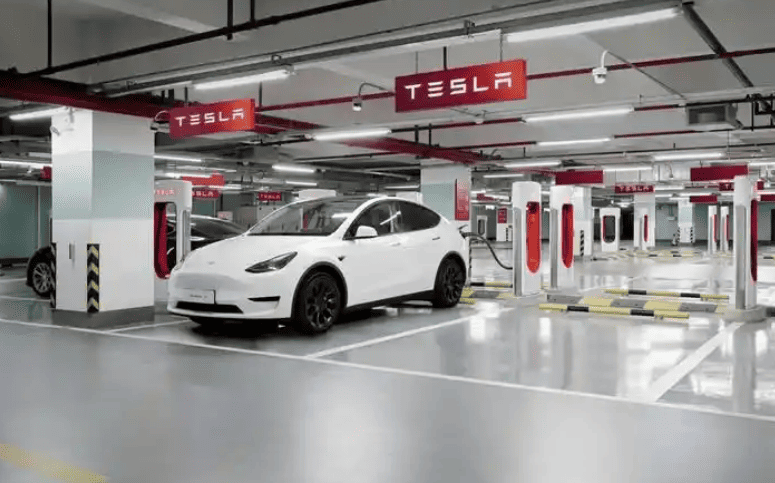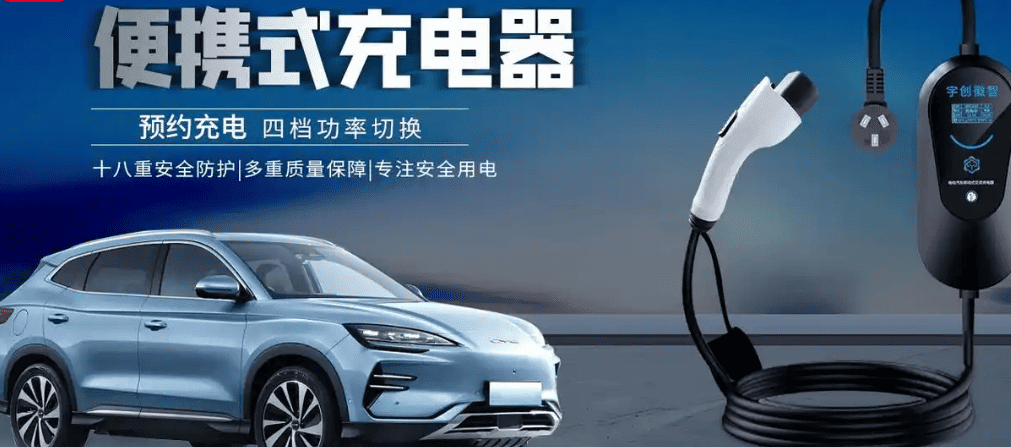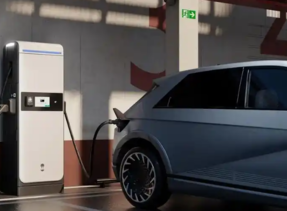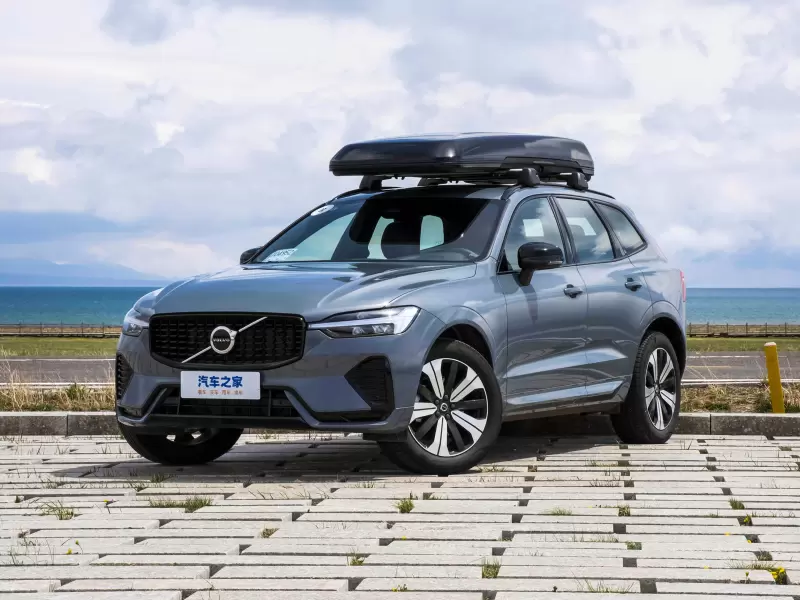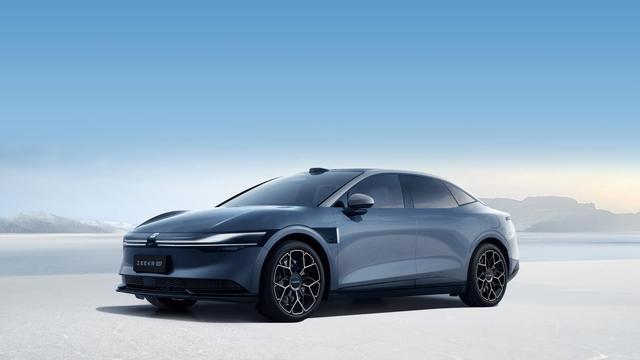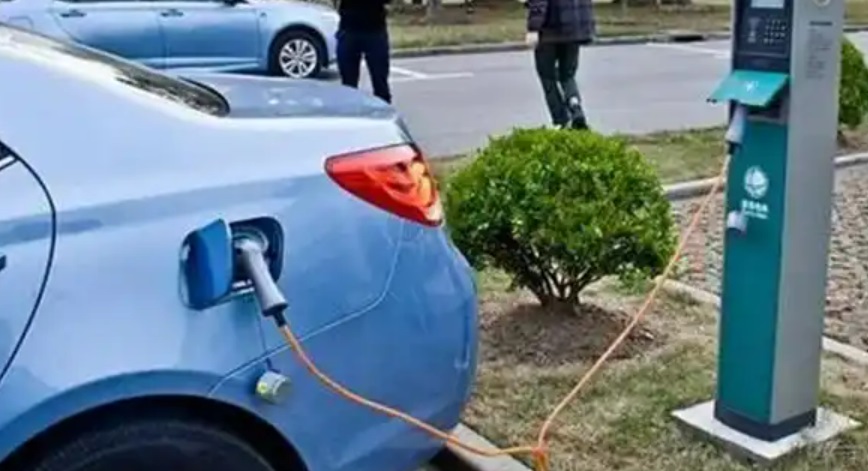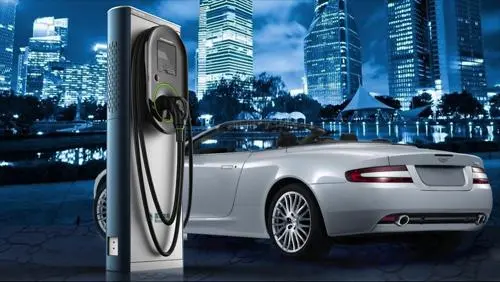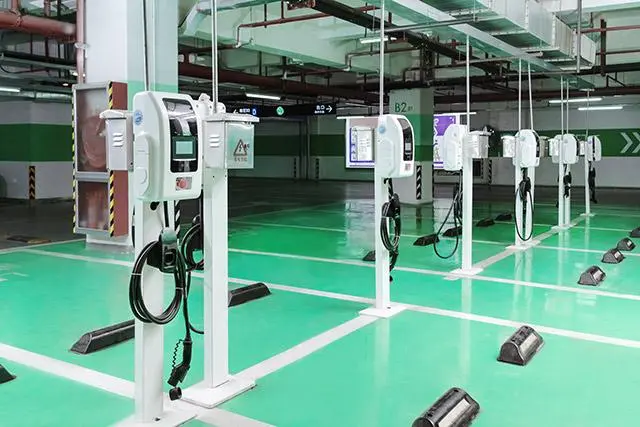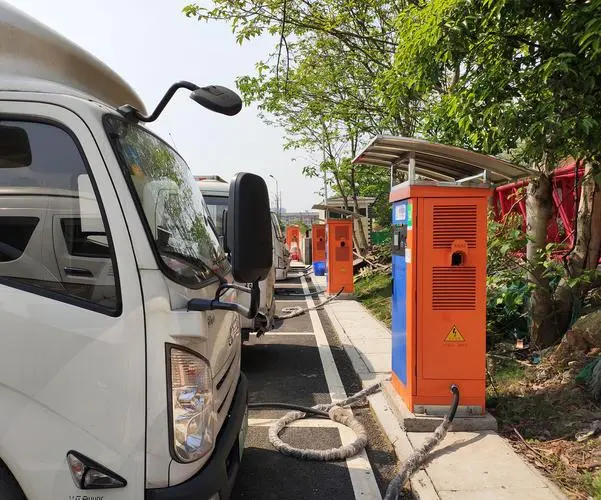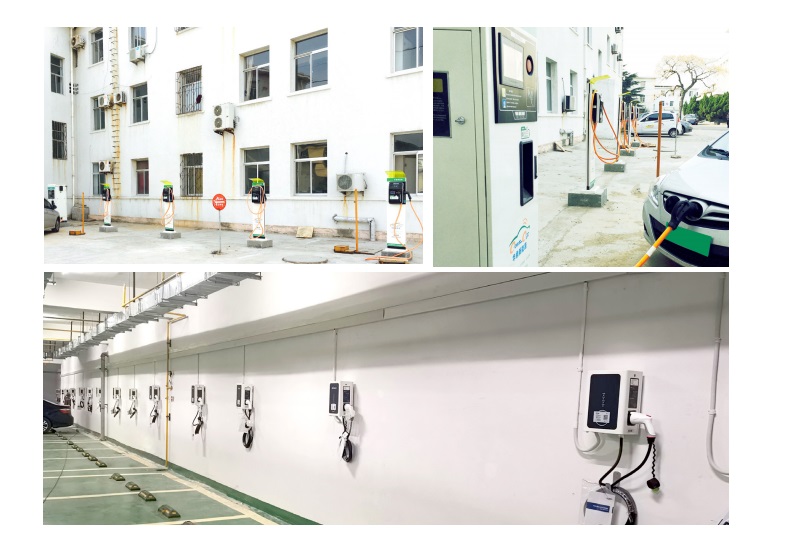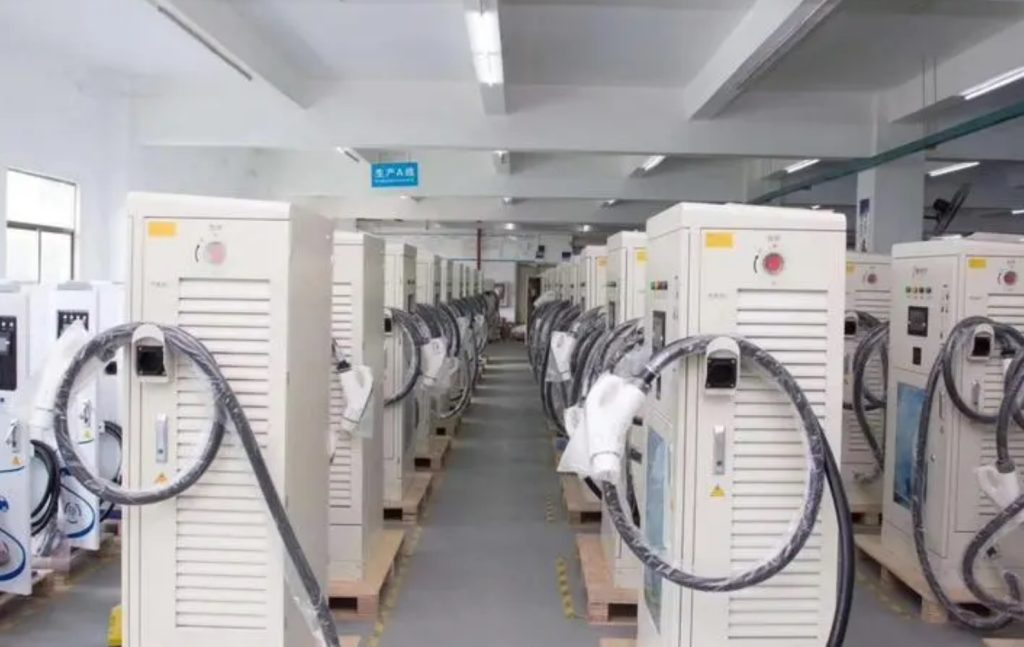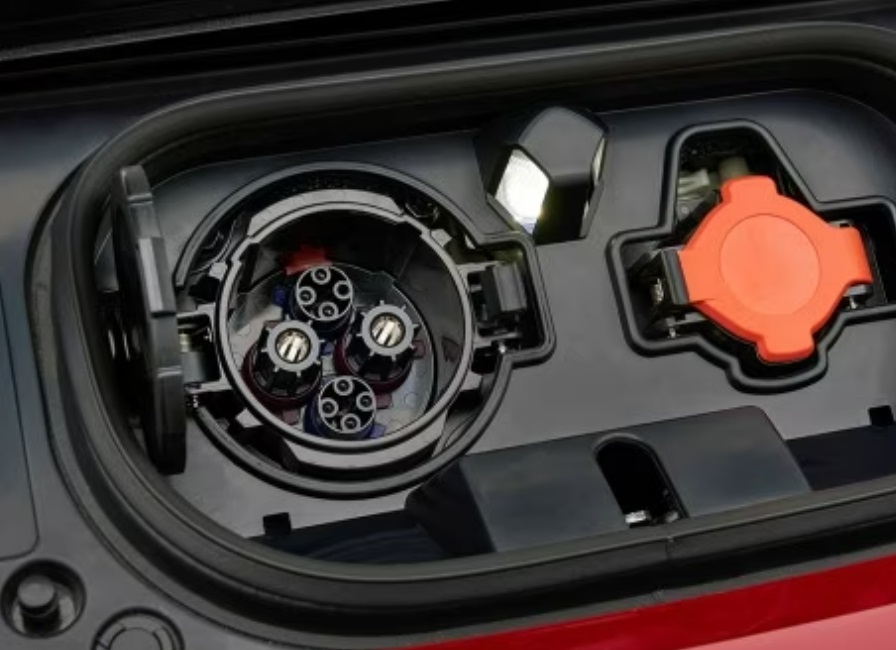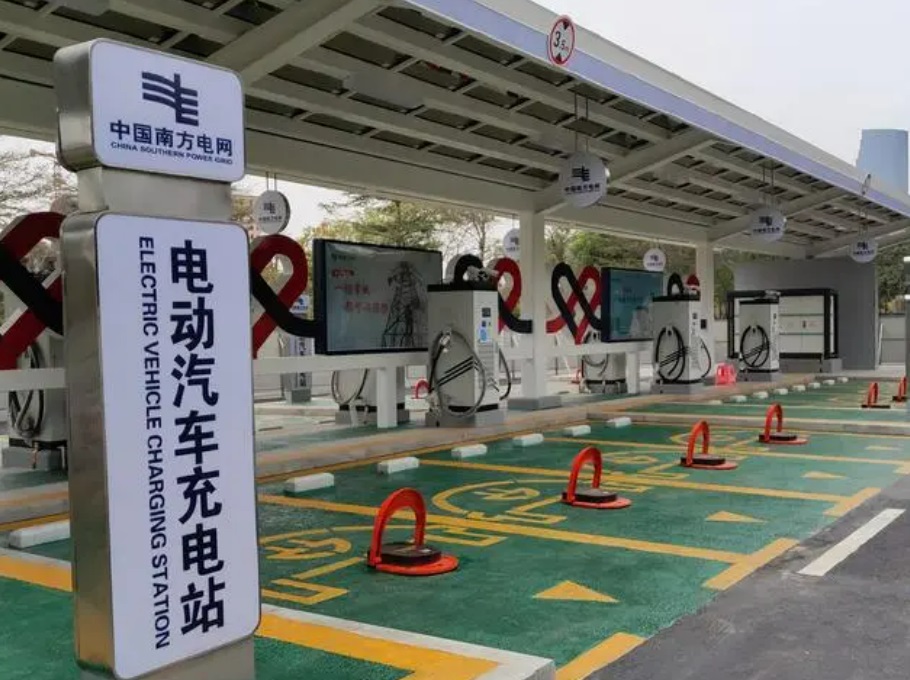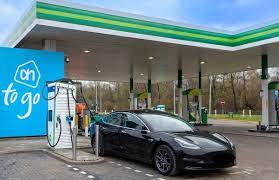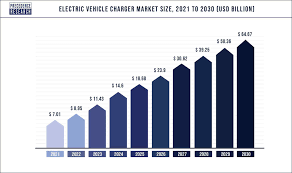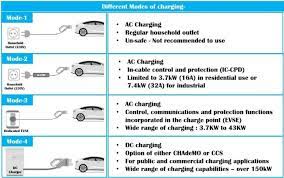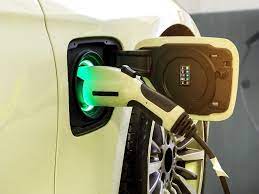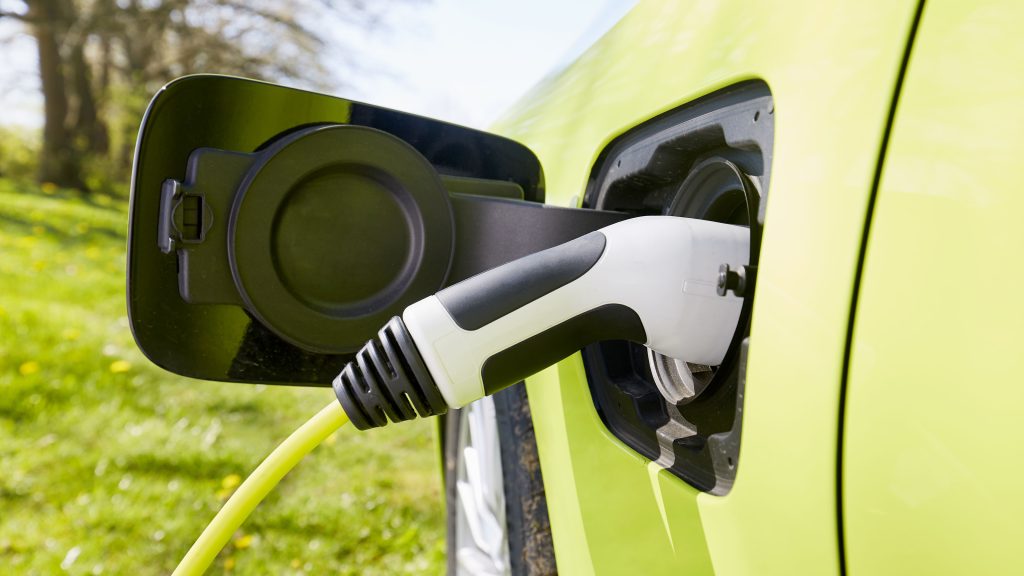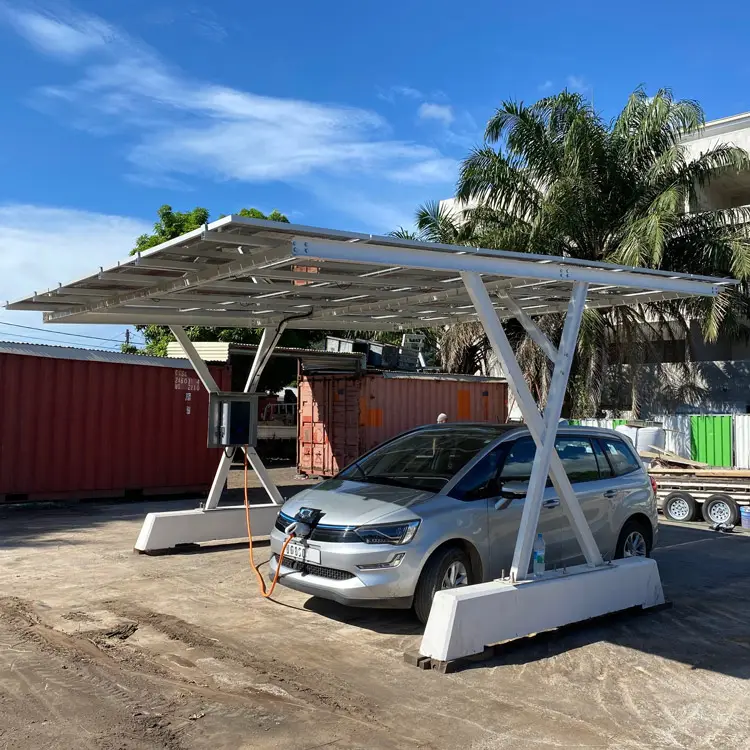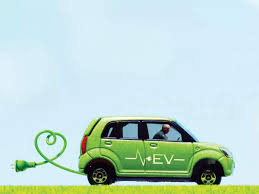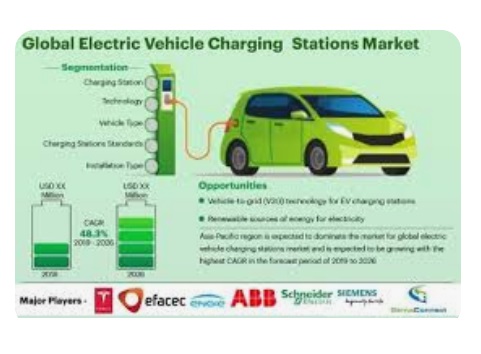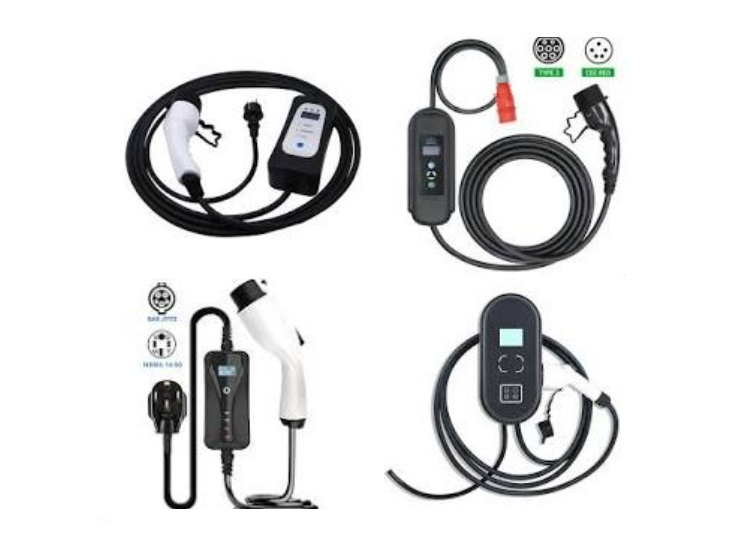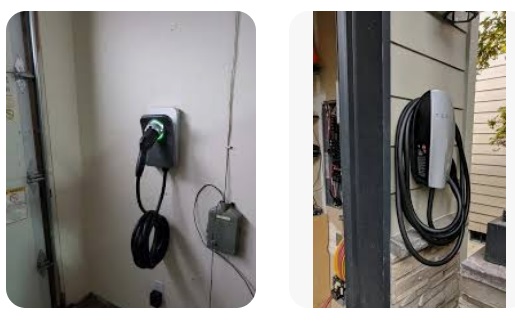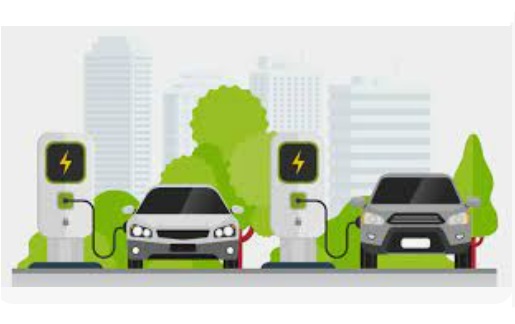What is New energy vehicles
What is New energy vehicles? New energy vehicles refer to the use of unconventional vehicle fuel as a power source (or the use of conventional vehicle fuel, the use of new on-board power devices), the integration of vehicle power control and drive advanced technology, the formation of advanced technical principles, with new technology, new structure of the car. New energy vehicles include pure electric vehicles, extended-range electric vehicles, hybrid electric vehicles, fuel cell electric vehicles, hydrogen engine vehicles, etc.
In November 2020, The General Office of the State Council issued the “New Energy Automobile Industry Development Plan (2021-2035)”, which requires in-depth implementation of the national strategy for the development of new energy vehicles, promote the high-quality sustainable development of China’s new energy automobile industry, and accelerate the construction of an automobile power.
In 2021, the annual output of new energy vehicles was 3.677 million, an increase of 152.5% over the previous year, ending three consecutive years of negative growth; The latest statistics of the China Association of Automobile Manufacturers show that in 2022, the production and sales of new energy vehicles in China were 7.058 million and 6.887 million, respectively, up 96.9% and 93.4% year-on-year, maintaining the world’s first place for eight consecutive years.
On February 28, 2023, the National Bureau of Statistics issued the Statistical Communique of the People’s Republic of China on National Economic and Social Development in 2022, showing that the annual output of new energy vehicles in 2022 was 7.013 million, an increase of 90.5% over the previous year. [41] As of July 3, 2023, China’s production of new energy vehicles has reached 20 million. In the first half of 2023, there were 3.611 million new energy vehicles, an increase of 35.0%. By the end of September 2023, there were 18.21 million new energy vehicles.
In March 2024, China’s automobile production and sales completed 2.687 million and 2.694 million, respectively, up 4% and 9.9% year-on-year. Among them, the production and sales of new energy vehicles completed 863,000 and 883,000, respectively, an increase of 28.1% and 35.3%.

Definition
According to the size of the scope, new energy vehicles can be divided into broad and narrow new energy vehicles.
Broad new energy vehicles, also known as alternative fuel vehicles, including pure electric vehicles, fuel cell electric vehicles such as all the use of non-petroleum fuel vehicles, but also including hybrid electric vehicles, ethanol gasoline vehicles and other parts of the use of non-petroleum fuel vehicles. All existing new energy vehicles are included in this concept, which is divided into six categories: hybrid electric vehicles, pure electric vehicles, fuel cell vehicles, alcohol ether fuel vehicles, natural gas vehicles, etc.
Narrow new energy vehicles can refer to the provisions of the national “New energy vehicle production enterprises and product access management Rules” : New energy vehicles refer to the use of unconventional vehicle fuel as a power source, comprehensive vehicle power control and drive advanced technology, formed with new technology, new structure, advanced technical principles of the car.
China Policy Support:
In October 2020, the General Meeting of The State Council passed the “New Energy Automobile Industry Development Plan”. According to the Plan, from 2021 onwards, the proportion of new energy vehicles in public areas such as buses, taxis, logistics and distribution will be no less than 80% in the national ecological civilization pilot zone and key air pollution prevention and control areas [6].
In November 2020, The General Office of the State Council issued the “New Energy Automobile Industry Development Plan (2021-2035)”, which requires in-depth implementation of the national strategy for the development of new energy vehicles, promote the high-quality sustainable development of China’s new energy automobile industry, and accelerate the construction of an automobile power. [3-4]
On December 27, 2021, the Shanghai Insurance Exchange officially launched the new energy vehicle insurance trading platform, and the first batch of new energy vehicle exclusive insurance products of 12 property insurance companies, such as PICC property insurance, Ping An property insurance, and CPIC Property insurance, to provide support for the landing service of new energy vehicle exclusive insurance products. [22]
We will launch pilot work on the application of new energy vehicle power replacement modes
In April 2021, in order to implement the “New Energy Vehicle Industry Development Plan (2021-2035)” and promote the innovative development of new energy vehicle power replacement mode, the Ministry of Industry and Information Technology jointly issued the “Notice on Organizing the Pilot Application of New Energy Vehicle power replacement Mode”. A few days ago, the General Office of the Ministry of Industry and Information Technology issued the Notice on Starting the pilot application of the New energy Vehicle power change Mode, and decided to start the pilot application of the new energy vehicle power change mode. A total of 13 cities are included in the pilot scope, of which 8 are comprehensive application cities (Beijing, Nanjing, Wuhan, Sanya, Chongqing, Changchun, Hefei, Jinan), and 3 are heavy truck characteristics (Yibin, Tangshan, Baotou). [17]
Published “New Energy Vehicle Commercial Insurance Exclusive Provisions (Trial)”
On December 14, 2021, with the increasing popularity of new energy vehicles, their risk characteristics are gradually exposed, which has been greatly different from traditional fuel vehicles. China Insurance Industry Association held a press conference and officially announced the “Exclusive Provisions of New Energy Vehicle Commercial Insurance (Trial)”. [20]
Five departments: Strengthen the construction of new energy vehicle safety system
On April 8, 2022, the five departments of the Ministry of Industry and Information Technology, the Ministry of Public Security, the Ministry of Transport, the Ministry of Emergency Management, and the General Administration of Market Regulation jointly issued the Guiding Opinions on Further Strengthening the Construction of the Safety System of New Energy Vehicle Enterprises (hereinafter referred to as the Opinions). It is proposed to comprehensively improve the overall safety level of new energy vehicles from the aspects of safety management mechanism, product quality and safety, and testing platform efficiency, so as to create a good consumer market environment for new energy vehicles. [25]
Ministry of Industry and Information Technology: will start the public domain vehicle comprehensive electric city pilot
On June 14, 2022, the Publicity Department of the CPC Central Committee held the eighth of a series of themed press conferences on “China’s Decade” to introduce the achievements of industrial and information development since the 18th National Congress of the CPC. At the meeting, Xin Guobin, vice minister of the Ministry of Industry and Information Technology, said in introducing the development of new energy vehicles that the Ministry of Industry and Information Technology will optimize the “double integral” management method, increase the breakthrough of the new system battery, vehicle operating system, etc., and start the public domain vehicle comprehensive electric city pilot. [27]
In 2022, according to the latest policy, the new energy vehicle purchase tax exemption policy originally scheduled to expire at the end of 2022 will be extended to the end of 2023. According to data released by the State Administration of Taxation on August 31,2022, in the first seven months of 2022, new energy vehicles were exempted from vehicle purchase tax of 40.68 billion yuan, an increase of 108.5% year-on-year. [30]
Three departments: Continue the policy of exempting new energy vehicles from vehicle purchase tax
On September 26, 2022, the Ministry of Finance website news, the Ministry of Finance, the State Administration of Taxation, and the Ministry of Industry and Information Technology issued an announcement on the continuation of the new energy vehicle purchase tax exemption policy. [31] On October 5, CCTV News client news, it is understood that the exemption policy of vehicle purchase tax for new energy vehicles has been extended to December 31, 2023, and the policy is favorable, which directly reduces the cost of car purchase for consumers and promotes automobile consumption. [32]
On December 11, 2023, the Ministry of Industry and Information Technology, the Ministry of Finance, and the State Administration of Taxation announced the technical requirements for the adjustment and reduction of vehicle purchase tax for new energy vehicle products. [53]
Shan Zhongde, Vice Minister of the Ministry of Industry and Information Technology: Improve the exit mechanism of backward car enterprises, and support the merger and reorganization of advantageous new energy car enterprises
On March 16, 2024, at the China Electric Vehicle 100 Forum (2024), Shan Zhongde, Vice Minister of the Ministry of Industry and Information Technology, said that China’s new energy vehicles have made remarkable achievements, but the development still faces some difficulties and challenges. Internationally, it is also necessary to jointly build an unimpeded and stable global industrial and supply chain, further uphold fair and transparent economic and trade rules, and better enable the building of a community with a shared future for mankind. From the domestic point of view, automotive chips, basic software, etc., also need to strengthen research, new energy vehicles low temperature adaptability, safety, charging convenience, etc., also need to continue to improve. He pointed out that the opportunities for the development of the new energy automobile industry are greater than challenges, favorable conditions are stronger than unfavorable factors, and he is full of confidence in the future of industrial development. Shan Zhongde introduced that the Ministry of Industry and Information Technology will strengthen departmental coordination, improve policies and measures, further enhance innovation and development capabilities, system competitiveness, and open cooperation capabilities, accelerate the development of new quality productivity of intelligent networked new energy vehicles, and increase the development of new energy automobile industry from four aspects.
Product
New energy vehicles include pure electric vehicles, extended-range electric vehicles, hybrid electric vehicles, fuel cell electric vehicles, hydrogen engine vehicles, etc.
Pure electric vehicle
Battery Electric Vehicles (BEV) is a vehicle that uses a single battery as the energy storage power source, which uses the battery as the energy storage power source, provides electric energy to the motor through the battery, drives the motor to operate, and thus promotes the car to drive. Rechargeable batteries of pure electric vehicles mainly include lead-acid batteries, nickel-cadmium batteries, nickel-metal hydride batteries and lithium-ion batteries, which can provide pure electric vehicle power. At the same time, pure electric vehicles also use batteries to store electrical energy, drive the motor to operate, so that the vehicle can run normally.
Hybrid electric vehicle
Hybrid Electric Vehicle (HEV), whose main drive system is composed of at least two single drive systems that can operate at the same time, the driving power of hybrid electric vehicle mainly depends on the driving state of the hybrid electric vehicle: one is provided by a single drive system; The second is provided through multiple drive systems.
Fuel cell electric vehicles
Fuel Cell Electric Vehicle (FCEV), under the action of the catalyst, the fuel cell electric vehicle uses hydrogen, methanol, natural gas, gasoline, etc. as the reactant and the oxygen in the air to burn in the battery, and then the electric energy provides the power source for the car. In essence, fuel cell electric vehicles also belong to one of the electric vehicles, in many aspects of performance and design and electric vehicles have a lot of similarities, it is divided into two categories because fuel cell electric vehicles are hydrogen, methanol, natural gas, gasoline, etc. through chemical reactions can be converted into electricity, and pure electric vehicles are by charging supplementary electricity.
Hydrogen engine car
Hydrogen Powered Vehicle (HPV), mainly based on hydrogen-powered fuel cells as fuel, hydrogen powered vehicle is the most environmentally friendly vehicle in new energy vehicles, can achieve zero pollution, zero emissions. However, the production cost of hydrogen power vehicles is too much, the cost of hydrogen power vehicles is 20% more than the cost of traditional fuel vehicles, and the battery cost of hydrogen power vehicles is very high, in the actual production is limited by storage and transportation conditions, it is difficult to practical application.
Extended-range electric vehicles
An Extended Range Electric Vehicle (EREV), similar to an electric vehicle, uses a battery to provide kinetic energy to an electric motor, which drives the motor to move the vehicle. However, the extended range electric vehicle has a petrol or diesel engine in the body, which can be used by the driver to replenish the running charge of the extended range electric vehicle if the battery is low.
Methanol vehicle
Cars that use methanol instead of petroleum fuel.
Pneumatic car
Compressed air powered vehicles (Airpowerd vehiele APV), referred to as pneumatic vehicles, use high-pressure compressed air as a power source, converting the pressure energy stored in the compressed air into other forms of mechanical energy to drive the car. Theoretically, other gas-powered vehicles powered by endothermic expansion such as liquid air and liquid nitrogen should also belong to the category of pneumatic vehicles.
Flywheel energy storage car
The process in which part of the kinetic energy or gravitational potential energy of the vehicle is converted into other forms of energy and stored in the high-speed flywheel for vehicle driving. The flywheel uses magnetic levitation and rotates at a high speed of 70000r/min. As an auxiliary in hybrid electric vehicles, the advantages are that it can improve energy efficiency, light weight, high energy storage, fast energy input and exit reaction, less maintenance and long life, the disadvantage is that the cost is high, and the motor vehicle steering will be affected by the flywheel gyroscope effect.
Supercapacitor car
Supercapacitors are capacitors that use the principle of double electric layers. Under the electric field generated by the charge on the two plates of the supercapacitor, the opposite charge is formed on the interface between the electrolyte and the electrode to balance the internal electric field of the electrolyte. This positive charge and negative charge are arranged in the opposite position on the contact surface between the two different phases with a very short gap between the positive and negative charges. This charge distribution layer is called the double electric layer, so the electric capacity is very large. (2010 Shanghai World Expo Park Expo line has used this car) The hybrid power supply composed of supercapacitors and batteries can fully meet the energy demand of the vehicle when driving, and can buffer the impact of instantaneous high power on the energy storage system, and extend the service life of the battery. In addition, supercapacitors can be charged with instantaneous high current, which can give back more efficient energy.
Feature
Hybrid electric vehicle
Hybrid electric vehicles have three types of arrangement: series, parallel and hybrid.
First, the series type refers to the engine drives the generator to generate electricity, and its electrical energy is directly transmitted to the motor through the motor controller, and the electromagnetic torque generated by the motor drives the car. The performance features are:
(1) The working state of the engine is not affected by the driving condition of the car, and it always runs stably in its best working area, so the engine has good economy and low emission indicators.
(2) Because there is a battery for driving power “peak load”, the power of the engine only needs to meet the power required for the stable operation of the car at a certain speed, so the engine with less power can be selected.
(3) There is no mechanical connection between the engine and the drive axle, therefore, there is no requirement for the speed of the engine, and the selection of the engine is large, such as the selection of high-speed gas turbines and other efficient prime movers.
(4) There is no mechanical connection between the engine and the motor, and the structural arrangement of the vehicle has greater freedom.
(5) The output of the engine needs to be fully converted into electrical energy and then into mechanical energy to drive the car, and generators and motors with sufficient power are required.
(6) In order to play a good generator output power balance role, but also to avoid the battery overcharge or overdischarge, you need a larger battery capacity.
(7) The generator converts mechanical energy into electrical energy, the motor converts electrical energy into mechanical energy, and the battery charging and discharging have energy losses, so the energy utilization rate of the engine output is relatively low.
Second, parallel means that the engine is connected with the drive axle through the mechanical transmission device, the motor is also connected with the drive axle through the power composite device, the car can be driven by the engine and the motor together or separately driven, its performance characteristics are:
(1) The engine directly drives the vehicle through the mechanical transmission mechanism, and the inorganic-electric energy conversion is lost, so the utilization rate of the engine output energy is relatively high. When the driving condition of the vehicle makes the engine run within its best working range, the fuel economy of the parallel HEV is higher than that of the series HEV.
(2) There is a motor for “peak load” effect, and the power of the engine can also be appropriately reduced.
(3) When the motor is only used as an auxiliary drive system, the power can be relatively small.
(4) If the generator is equipped, the power of the generator can also be small.
(5) Because there is a generator to supplement the power, a relatively small battery capacity can meet the requirements of use.
(6) Since the operation condition of the engine of the parallel drive system is affected by the driving condition of the car, the engine will run more in its bad working condition when the driving condition of the car changes more and more. Therefore, the engine blowdown is higher than the tandem type.
(7) Due to the direct mechanical connection between the engine and the drive axle, it is necessary to adapt to the changes in the driving conditions of the car through the transmission device, in addition, the engine and the motor are driven in parallel, and the power compound device is also required, so the transmission mechanism of the parallel drive system is more complex.
Third, the hybrid drive system is a combination of series and parallel, which means that part of the power emitted by the engine is transmitted to the transaxle through mechanical transmission, and the other part drives the generator to generate electricity. The structure and control mode of the hybrid drive system give full play to the advantages of series and parallel, which can make the engine, generator, motor and other components more optimized and matched, so as to ensure the structure of the system in more complex working conditions in the optimal state, so it is easier to achieve the emission and fuel consumption control objectives. [9]
Disadvantages: the system structure is relatively complex; The fuel saving effect of long-distance high-speed driving is not obvious.
Pure electric vehicle
Advantages:
(1) Zero emission. Pure electric vehicles use electric energy, no exhaust gas is discharged during driving, and do not pollute the environment.
(2) High energy efficiency. Studies have shown that the same crude oil is refined, sent to a power plant to generate electricity, charged into a battery, and then driven by the battery car, its energy efficiency is higher than after refining into gasoline, and then driven by a gasoline engine car.
(3) Simple structure. Due to the use of a single electric energy source, eliminating the fuel tank, engine, transmission, cooling system and exhaust system, compared with the traditional internal combustion gasoline engine power system, its structure is greatly simplified.
(4) Low noise. In the process of driving vibration and noise is small, inside and outside the car ten minutes quiet. [10]
(5) Wide raw materials. The electricity used can be obtained from a variety of primary energy sources, such as coal, nuclear, hydro, etc., relieving people’s concerns about the depletion of oil resources.
(6) Shifting peaks and filling valleys. For power generation enterprises and power companies, the battery of electric vehicles can be charged at night using the cheap “valley electricity” of the grid, which can smooth the peak-valley difference of the grid, so that the power generation equipment can be fully utilized day and night, thus greatly improving the economic efficiency.
Cons:
(1) Short driving range. The range per charge is short, and the range of a pure electric vehicle loaded with lead-acid batteries of the same quality as gasoline is only 1/70 of that of a fuel car.
(2) High cost. The high price of battery and motor controller is the main reason for the high cost.
(3) Long charging time. It takes 6 ~ 10h to complete a charge, although there are fast charging devices, using high current charging, it generally takes 10 ~ 20 minutes, and can be charged to about 70% of the electricity, but fast charging damages the service life of the battery.
(4) High maintenance costs. The maintenance cost of pure electric vehicles is high, and there is currently no authorized service station.
(5) Battery life is short. At present, battery technology needs to be reformed, and the life of the power battery is short, and it has to be replaced in a few years.
Fuel cell vehicle
Compared with conventional vehicles, fuel cell vehicles have the following advantages:
- Zero or near zero emissions. Fuel cells combine hydrogen and oxygen through electrochemical methods to directly generate electricity and heat and discharge water without polluting the environment.
- Diversification of fuels.
3, the fuel cell conversion efficiency is high (about 60%), the vehicle fuel economy is good.
Cons: Fuel cells are expensive, and the cost of use (hydrogen) is expensive.
Power Supply:
From the perspective of the development of global new energy vehicles, its power supply mainly includes lithium-ion batteries, nickel-metal hydride batteries, lead-acid batteries, and supercapacitors, of which supercapacitors are mostly in the form of auxiliary power sources. The main reason is that these battery technologies are not fully mature or obvious shortcomings, compared with traditional cars, whether it is from the cost, power or range there are many gaps, which is also an important reason for restricting the development of new energy vehicles.
Lead-acid battery
Among all battery technologies, lead-acid batteries have the longest history of development. The battery uses metallic lead as a negative electrode and lead oxide as a positive electrode. In the discharge process of the battery, lead sulfate is generated at both positive and negative poles, and sulfuric acid is both a reactant and a product of the reaction process in the electrolyte solution. In the past decade or so, the research and development of lead-acid batteries have mainly focused on the application of hybrid electric vehicles.
Nickel-metal hydride battery
Nickel-metal hydride batteries work based on nickel oxide anodes and hydrogen metal negatives releasing and absorbing OH-. In the past, nickel-metal hydride batteries were seen as a good interim option for electric vehicles, given the serious safety issues with lithium-ion batteries. However, its energy density of 50~70Wh/kg cannot meet the energy density requirements of 150~200Wh/kg for electric vehicles. At the same time, the large proportion of nickel in nickel hydride batteries limits its future price reduction. Therefore, nickel-metal hydride batteries are not a reliable option.
Lithium-ion battery
Lithium-ion batteries are the most used power battery technology in electric vehicles today, thanks to their high energy density and increased power in individual cells, allowing such batteries to develop smaller mass and density at a competitive price. At present, these power batteries can power the electric car to travel about 150km. Lithium is inserted into the electrode of the lithium-ion battery, that is, the electrode material is the carrier of lithium ions. Studies have shown that the lithium-ion battery power (800 to 2000W/kg) and energy density (100 to 250Wh/kg) used in electric vehicles have increased. Lithium battery charging only needs to be “seven points full”, lithium battery does not need to be full, not full will not affect the battery life.
Supercapacitor
If the battery needs to provide both storage energy for a longer period of time and pulse power for a short period of time to start the engine or start the vehicle, the battery design needs to adopt a compromise solution. More electrodes are required in each cell to increase the total surface area. This increased current is distributed over a larger electrode area to maintain the battery voltage drop to meet system requirements. If the power requirements can be provided by other devices, the battery can use heavier electrodes, achieving better durability while meeting energy storage requirements at low magnifiers. An ideal approach would be for a supercapacitor to provide pulse power and a battery to provide only energy storage. Supercapacitors can be recharged at lower magnifications in preparation for the next power output, or charged using braking energy recovery. After being charged through a supercapacitor, the battery can operate over a wide range of state of battery charge (SOC) because the power needed to start up is already stored in the supercapacitor. The combination of batteries and supercapacitors inevitably requires a more complex charging system, because the charging and discharging characteristics of batteries and supercapacitors are significantly different, so the charging cut-off voltage is very different. Therefore, some kind of DC/DC converter or switching device may be required to control two devices on the same DC bus.

